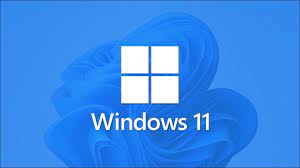
The Cost of Windows 11 for Educational Institutions Explained
In the ever-changing world of education, technology plays a crucial influence on how students learn. With the launch to How much is Windows 11 , educational institutions are now faced with new issues regarding budget allocations. This article explores the cost implications of adopting Windows 11 in the context of education aiding institutions to make informed decisions about upgrading their systems.
The True Cost of Transitioning to Windows 11
For a lot of educational institutions that require financial support, the cost with upgrading to Windows 11 can be significant. Apart from the initial purchase of licenses for software, institutions might have to think about hardware upgrades. Windows 11 has specific system requirements that could require investments in new computers or upgrading existing ones. Institutions must conduct an in-depth analysis of their current technology infrastructure to evaluate the costs of implementing the upgrade.
Another aspect of financial consideration is the potential requirement for staff training. Moving to a new operating system usually requires staff to become familiar with the new features and functions. It can result in additional costs in the form of training programs and resources. However they can be mitigated by leveraging online tutorials and resources provided by Microsoft that will help to speed up the learning curve for teachers and IT staff alike.
Balancing Costs with enhanced educational opportunities
Despite the upfront costs and initial costs, the advantages from Windows 11 for schools are a lot. It offers improved security features, better performance, and a more intuitive user interface. These benefits can translate into the creation of a more efficient and effective learning environment. For example, the enhanced security features help safeguard the sensitive data of students from cyber-attacks, and the intuitive interface allows educators to focus on teaching, not attempting to solve technical problems.
Additionally, Windows 11 supports a wide range of educational tools and applications that enhance the learning experience in classrooms. Through the use of these tools, educators can create exciting lessons that are geared towards various learning styles, thereby improving the learning outcomes of students. So, even though the initial investment may seem overwhelming, the advantages of a better education are more than worth the expense.
Strategic Planning for Cost-Effective Implementation
To reap the maximum benefits from switching to Windows 11 educational institutions must adopt a strategic approach to implementation. A thorough cost-benefit assessment can assist in determining the most cost-effective path to follow. Certain institutions might opt for a phased rollout, starting with a pilot program to examine the impact and to address any issues prior to a full-scale deployment.
In addition, institutions can consider collaborations with technology companies and leverage educational discounts offered by Microsoft to reduce costs. By collaborating with stakeholders and prioritizing budget allocation, schools can facilitate the smooth migration into Windows 11 without compromising educational quality.
In the end, although the cost of adopting Windows 11 for educational institutions involves various considerations, the potential for improved educational outcomes makes it a worthwhile investment. Through careful planning and strategic budgeting, schools can tap the power to the full potential of Windows 11 to create a dynamic and secure learning environments that are beneficial to both students and teachers.